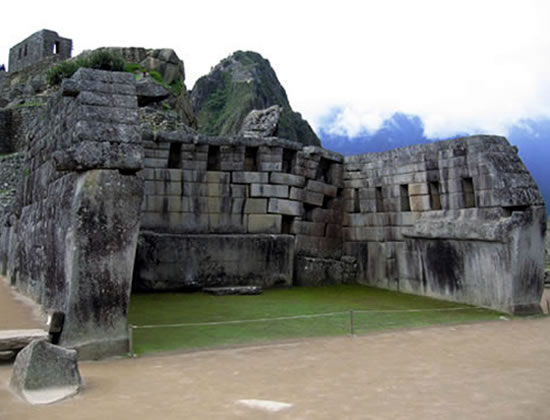Religious
A high degree of energetic investment was put into the ritual purposes of the road. In Inca society, the mountains were objects of worship; the Incas held many rituals, including the sacrifice of children, goods, and llamas, at the tops of mountains.
The only way for the Incas to reach the summits of the mountains for worship was by constructing roads. Many Inca roads went thousands of feet above sea level, such as mount Chani, which had a road that started at the base and went to the summit, which was at a height of nearly six thousand feet. In addition to high altitude shrines, there were also many holy shrines or religious sites, called wak’a, that were a part of the Zeq’e system along and near the roads. These shrines were either natural or modified features of the landscape, as well as buildings, where the Inca would visit for worship.temple inka de machupicchuMachu Picchu: Main Temple
May be in one of another post we will write more about incas religion…
Festivals
The Incan calendar had 12 months of 30 days, with each month having its own festival, and a five-day feast at the end, before the new year began. The Incan year started in December, and began with Capac Raymi, the magnificent festival.
| Gregorian month | Inca month | Translation |
|---|---|---|
| January | Camay | Fasting and Penitence |
| February | Hatun-pucuy | Great Ripening |
| March | Pacha-puchuy | Earth Ripening |
| April | Ayrihua or Camay Inca Raymi | Festival of the Inca |
| May | Aymoray qu or Hatun Cuzqui | Harvesting |
| June | Inti Raymi | Feast of the Sun and the great festival in honour of the sun for the harvest |
| July | Chahua-huarquiz, Chacra Ricuichi or Chacra Cona | The Harvest Festival |
| August | Yapaquis, Chacra Ayaqui or Capac Siquis | Sowing month |
| September | Coya Raymi and Citua | Festival of the Moon |
| October | K’antaray or Uma Raymi | Month of crop watching |
| November | Ayamarca | Festival of the dead |
| December | Capac Raymi | Magnificent festival |




